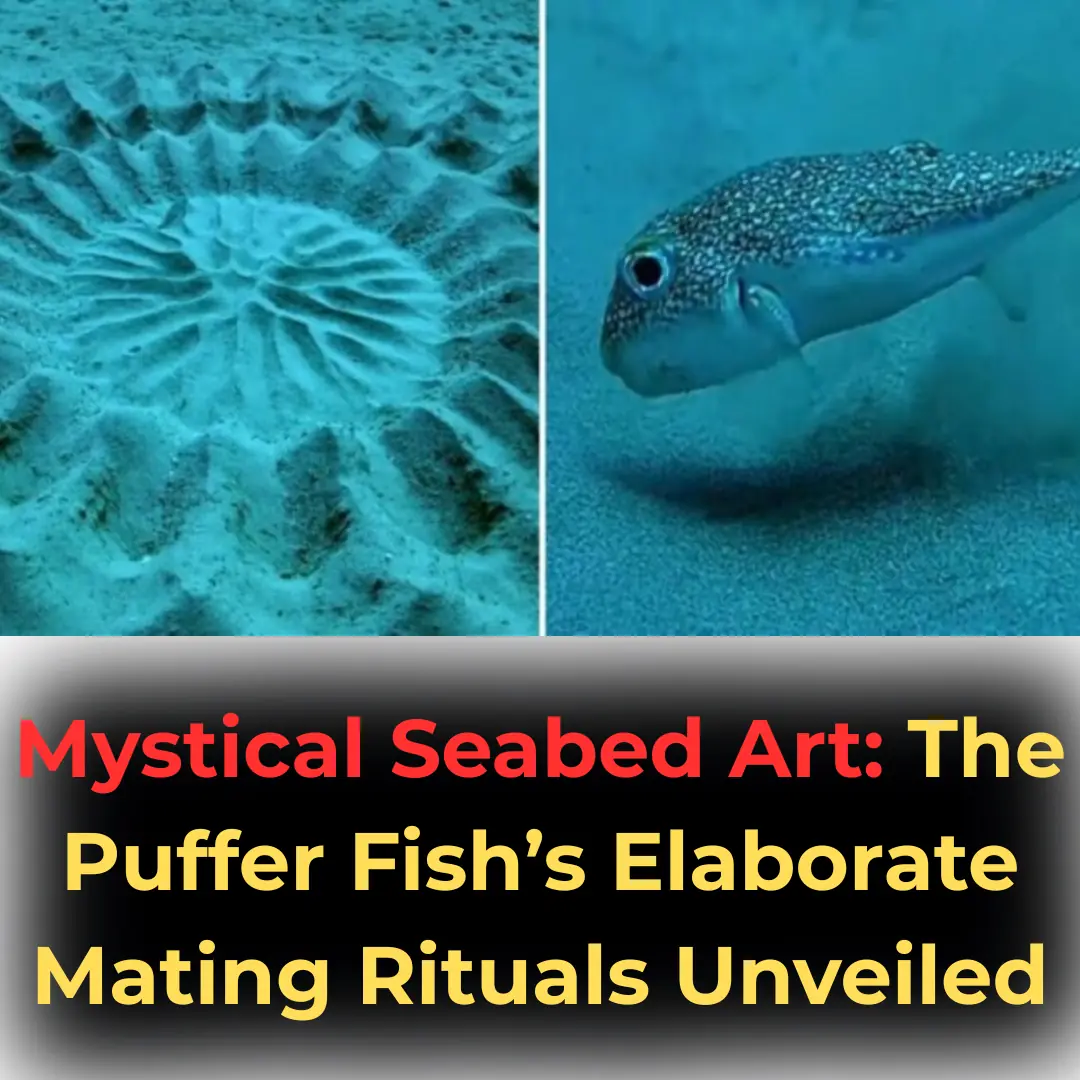
Mystical Seabed Art: The Puffer Fish’s Elaborate Mating Rituals Unveiled
Mystical Seabed Art: The Puffer Fish’s Elaborate Mating Rituals Unveiled
For years, divers were baffled by the intricate, circular patterns etched into the Japanese seabed. These mysterious “underwater crop circles” were a marvel of nature, but their origin remained a perplexing enigma. Now, scientists have unveiled the truth behind these stunning formations, and it’s a tale of love, labor, and a tiny, talented fish.
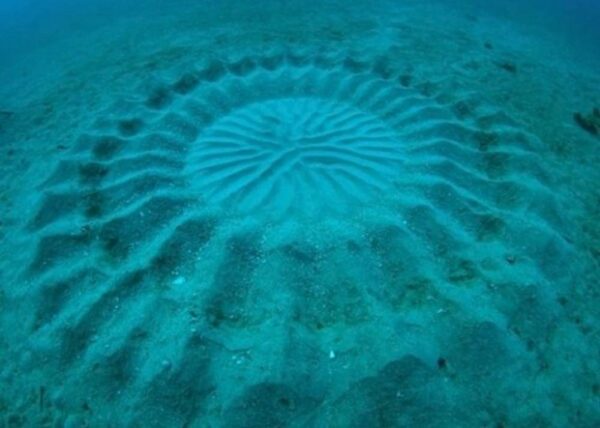
The Pufferfish Artist
The culprit behind these underwater masterpieces is a small, yet extraordinary creature: the pufferfish. These unassuming fish, measuring a mere 5 inches in length, meticulously construct elaborate circles of sand and shells to attract potential mates.
Each circle spans up to 7 feet in diameter—more than 10 times the size of the fish itself—and can take up to 10 days to complete. Despite the strong underwater currents and shifting sediments, the pufferfish manages to preserve the symmetry and fine details of the design, showing a remarkable sense of spatial awareness and determination.
A Labor of Love
Male pufferfish spend weeks painstakingly creating these intricate designs. They gather fine sand, arrange it in precise patterns, and decorate their creations with seashells. These artistic endeavors are not just for show; they serve as a testament to the male’s fitness and dedication.
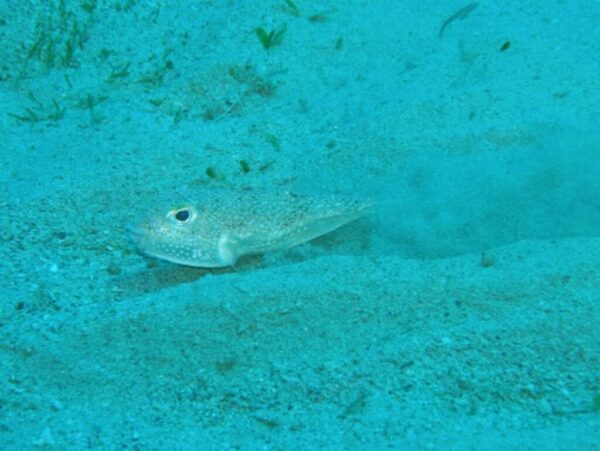
Interestingly, the placement of shells and ridges within the circle appears to serve more than aesthetic purposes. Scientists believe these features may help reduce turbulence within the nesting site, making it safer for eggs. The fine sand in the center provides a soft bed for spawning, while the ridges at the edges possibly act as barriers to predators or help funnel oxygen-rich water into the nest.
A Risky Romance
Once the circle is complete, the male pufferfish awaits the arrival of a female. If she approves of his handiwork, she will enter the circle and mate with him. However, if she is unimpressed, his labor of love will be washed away by the ocean currents.
Even after successful mating, the male remains to guard the eggs, which hatch within six days. This adds another layer of complexity to his role—not only must he be an artist and architect, but also a vigilant protector.
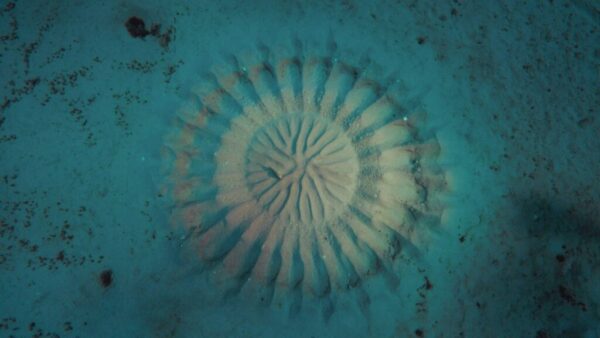
The Science Behind the Beauty
Scientists have studied these unique mating rituals to understand the underlying reasons for such elaborate displays. They believe that the circles may help to attract females, protect eggs from predators, or create optimal conditions for fertilization.
These structures also offer a rare glimpse into the intersection of instinctual behavior and seemingly intentional design. While the fish are not consciously creating “art,” their behavior reflects a highly evolved survival and reproductive strategy that, in turn, results in visually stunning outcomes.
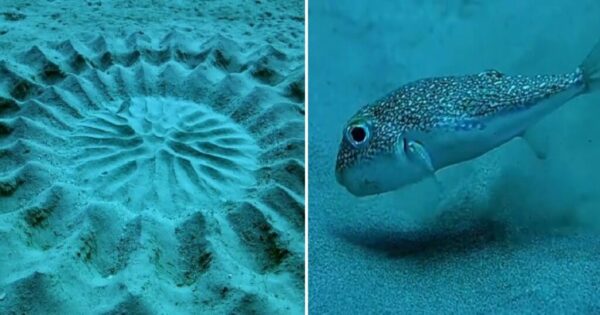
Nature’s Wonders
The discovery of the pufferfish’s intricate mating rituals is a testament to the incredible diversity and complexity of the natural world. It reminds us that even the smallest creatures can create extraordinary works of art.
Beyond their visual allure, these patterns challenge our understanding of non-human intelligence and creativity. How much of art is instinct? How much is communication? The pufferfish’s sand circles suggest that beauty in nature often serves a deeper function—a survival tool, a signal, a story etched in grains of sand.
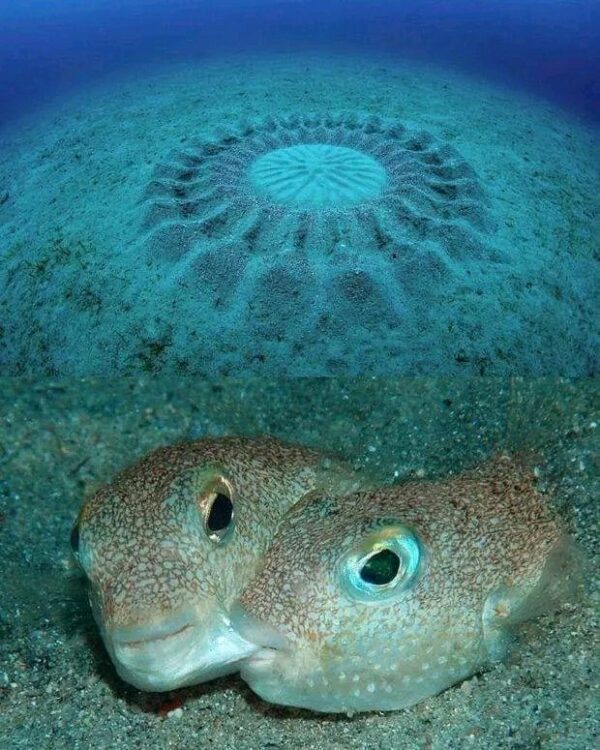
The next time you dive into the ocean, keep an eye out for these amazing underwater crop circles. They are a reminder of the beauty and mystery of the marine world, and a testament to the power of love and creativity.
News in the same category

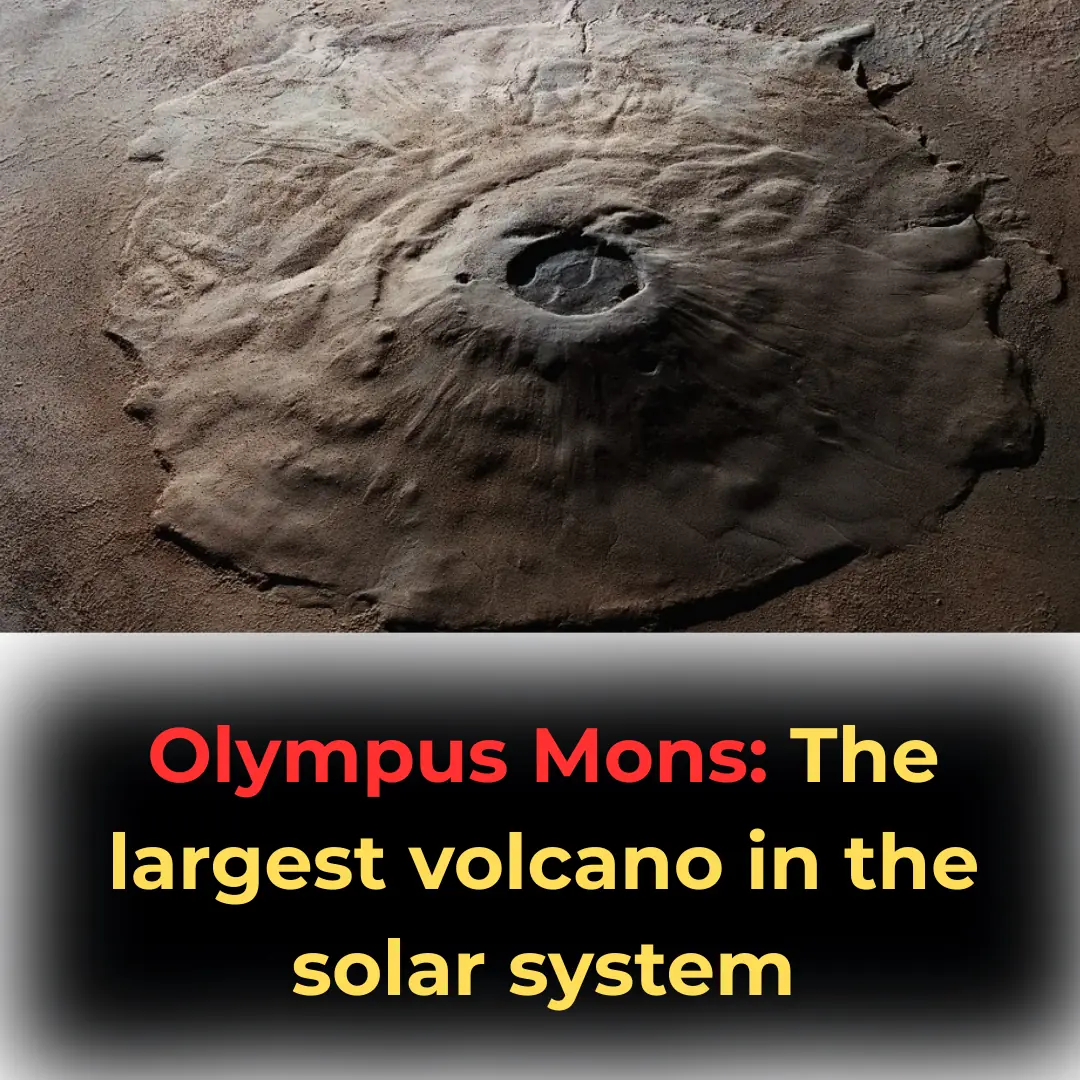
Olympus Mons: The largest volcano in the solar system

"What If Pangea Still Existed? A Fascinating Look at Our Ancient Supercontinent"
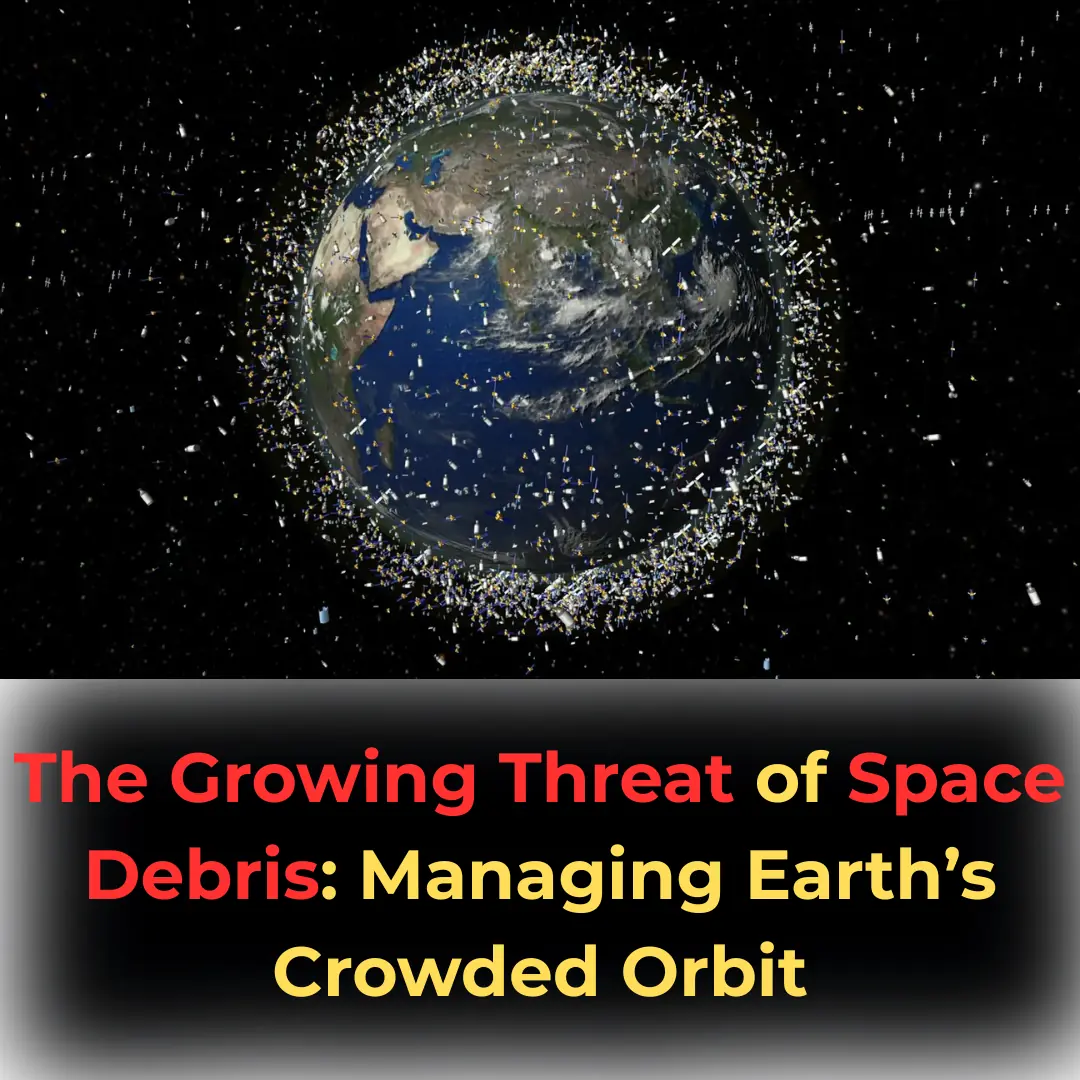
The Growing Threat of Space Debris: Managing Earth’s Crowded Orbit

AM I WRONG TO BE ANGRY THAT MY 71-YEAR-OLD MOM SPENT MONEY ON A TRIP INSTEAD OF HELPING ME PAY MY BILLS?

A wounded veteran picks up trash, as people whisper behind me.

I held her tight while she cried and wouldn’t let go.

My 8-year-old son insisted that we surprise our neighbor for her birthday, but we didn’t expect how she would react.

A police officer found a tiny kitten, but when he watched security footage, he frowned.

When Mommy asked, “Are you home?” I wanted to say “yes,” but I couldn’t.

A Rich Man Turned Away a 10-Year-Old Boy Begging for Help – 13 Years Later, Their Paths Cross Again in an Unexpected Twist
Soaked by rain and trembling with hunger, a young boy once asked a wealthy stranger for help, and was coldly turned away. Thirteen years later, their paths cross again, but this time the boy holds the power to change a life.

My 16-Year-Old Son Went to Stay with His Grandmother for the Summer – One Day, I Got a Call from Her
When my 16-year-old son offered to spend the summer taking care of his disabled grandmother, I thought he’d finally turned a corner. But one night, a terrifying call from my mother shattered that hope.

"Cassini’s Final Dive: The Most Breathtaking Close-Ups of Saturn Ever Captured!"

HE WOULDN’T LET GO OF THE CHICKEN—AND I DIDN’T HAVE THE HEART TO TELL HIM WHY SHE WAS MISSING YESTERDAY

A few days before graduation, I lost my parents. Then a stranger walked in.

Father and Son Build 50,000 New Beehive Colonies Around the World

Scientists Have Developed An Oxygen Particle That, When Injected, Enables Temporary Survival Without Breathing.
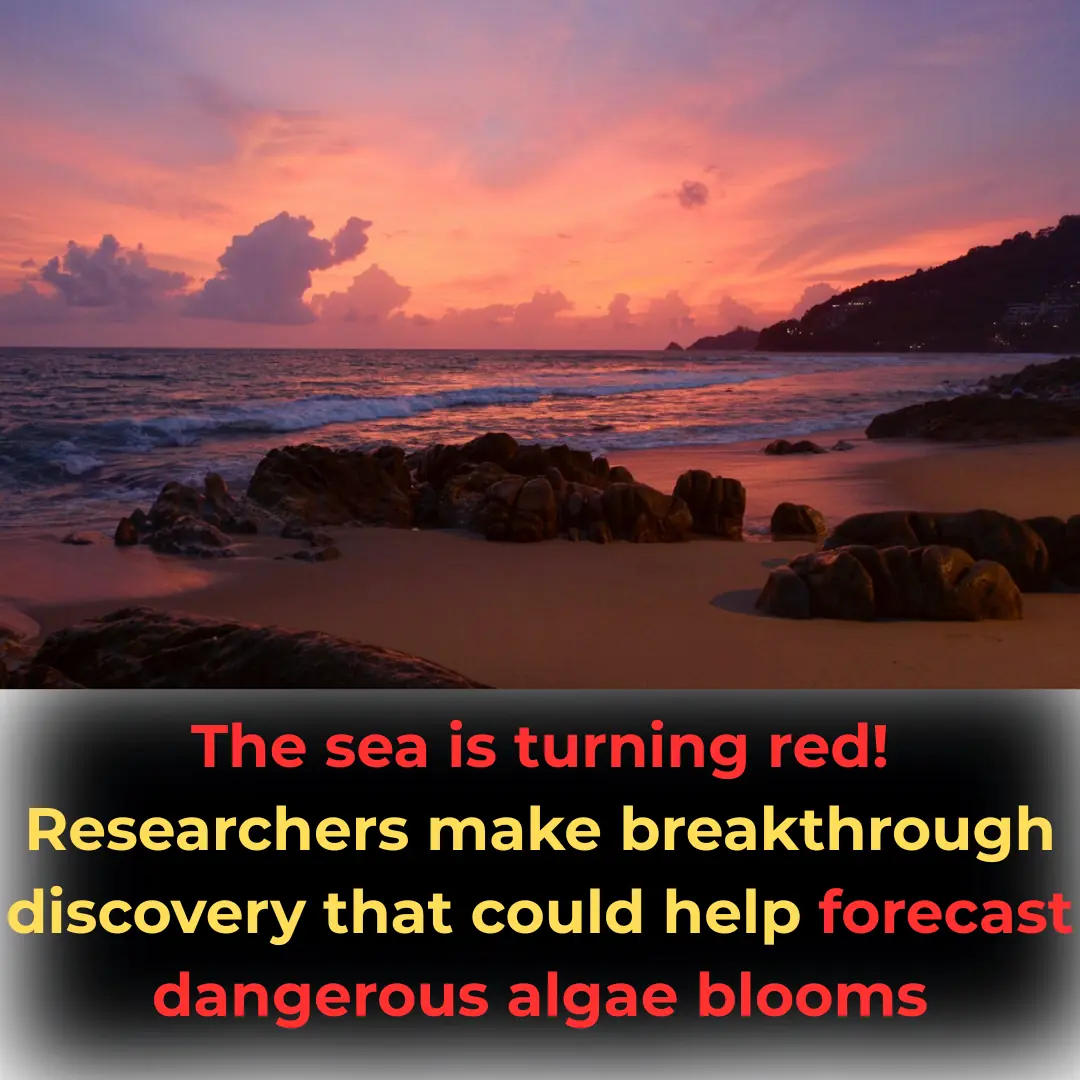
The sea is turning red! Researchers make breakthrough discovery that could help forecast dangerous algae blooms

Nasa Found A Diamond In Space That Is 5 Times Bigger Than Earth!

Single Mother of 3 Shows up for the Reading of Her Late Husband's Will Only to Find Out the Lawyer Was His Mistress — Story of the Day
News Post

Mystical Seabed Art: The Puffer Fish’s Elaborate Mating Rituals Unveiled

Olympus Mons: The largest volcano in the solar system

I transferred the car to my mother so that you wouldn’t get it in the divorce,” Artem sneered with a smirk. But Polina only smiled, knowing exactly how to outplay him

10 Things You Should Do When Checking Into a Hotel Room

"What If Pangea Still Existed? A Fascinating Look at Our Ancient Supercontinent"

How to Treat H. Pylori Bacteria Causing Heartburn and Bloating + Natural Remedies

My Father Told Me to Shower with a Special Soap – When My Boyfriend Discovered the Truth, He Broke Down in Tears

8 Ways To Get Rid Of Phlegm And Mucus In Chest And Throat

The Growing Threat of Space Debris: Managing Earth’s Crowded Orbit

After A 49-Year-Old Father Of Two Passes Away, There Is An Urgent Warning For All Pet Owners Who Allow Their Dogs To Lick Them

8 of the Best Anti-Cancer Foods. It’s Time to Start Adding Them to Your Diet

Getting Annoyed By Chewing Sounds Is a Genuine Psychiatric Disorder

5 Concerning Red Flags That May Signal Colon Cancer

AM I WRONG TO BE ANGRY THAT MY 71-YEAR-OLD MOM SPENT MONEY ON A TRIP INSTEAD OF HELPING ME PAY MY BILLS?

Risk Of Prostate Cancer Increases By 45% In Men Who Share This Common Practice

A wounded veteran picks up trash, as people whisper behind me.

End-of-life nurse shares the most disturbing behaviors seen in those nearing death

I held her tight while she cried and wouldn’t let go.

**Say Goodbye to Skin Tags and Warts: Easy Removal with Hydrogen Peroxide**
